Little brown birds. Often sparrows and finches are called little brown birds because they look similar at first glance. Their markings may not be as distinct as chickadees and juncos but after watching them at the bird feeder for awhile and consulting a bird identification book, one can determine what species is visiting.
Certain birds tend to frequent bird feeders in winter more often than others. During this three-week series, I’ll help you identify some of the more common birds at your feeder. All of the following birds have been attracted to sunflower seeds.
Pine siskin
These brown and yellow birds may visit your feeder one year and not the next. They wander in response to seed crops which makes them an irruptive species.
Pine siskins are brown, streaky birds with subtle yellow edging on their wings and tails. They come in flocks and twitter constantly.
While they particularly like thistle seed at feeders they also eat sunflower seeds. Away from the feeder they eat seeds from conifers, deciduous trees and other plants. They prefer smaller seeds without tough shells and often scavenge under feeders for fragments of larger seeds left by other birds.
Song sparrow
Sparrows can be a challenge to identify because they look similar at first. The song sparrow is one of the most familiar North American sparrows.
Song sparrows have a slaty gray and red brown striped head with a streaky brown body. Their white chest and flanks exhibit thick streaks. Song sparrows in the Pacific Northwest are darker and more heavily streaked then elsewhere.
In the fall, juvenile song sparrows band together to form flocks.
House finch
The rosy red face, upper breast and rump help identify the male house finch. The rest of the bird is streaky brown and cream.
If you notice a male house finch at your feeder, a female may be hanging around. Females don’t have red coloring and are plain grayish-brown with streaks.
House finches tend to gather at feeders or nearby trees in large flocks, often taking over the feeder as they sit and shell the seeds right there.
American goldfinch
In the winter, the male American goldfinch isn’t as vibrantly-colored as in the summer. Instead both the male and female are a dull yellow with blackish wings and two pale wingbars.
Goldfinches lack a streaking pattern which is one way to tell them apart from pine siskins. Goldfinches, pine siskins and common redpolls often flock together.
Goldfinches are strictly vegetarian and eat a variety of seeds–mainly sunflower and thistle seeds from feeders or the ground below feeders.


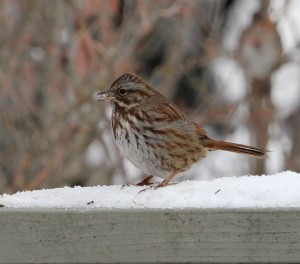
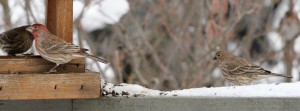
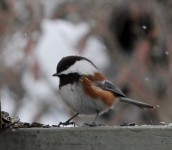
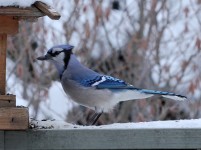
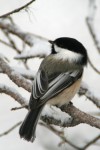
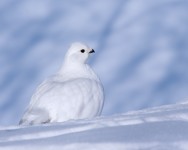
I have birds at my feeder that are black with brownish colored heads. Do you know what they might be? From my window they seem to be no more than 4-5 inches long and most of them prefer to scratch at the seeds on the ground.
Do you have a picture? Otherwise try Merlin Bird ID on AllAboutBirds.org (it is in the upper right corner).
Laura
Laura, can I send you a short video clip that includes an audio file of a bird that is probably common around Lake Pend O? I couldn’t see them but heard them everywhere. I was hiking dense forest on green monarch mtn. I would love to find out what it was. Probably an easy one for you.
Yes, I can try. I’m still working on recognizing all my bird songs.
My email is laura @ naturallynorthidaho.com .
Thanks,
Laura